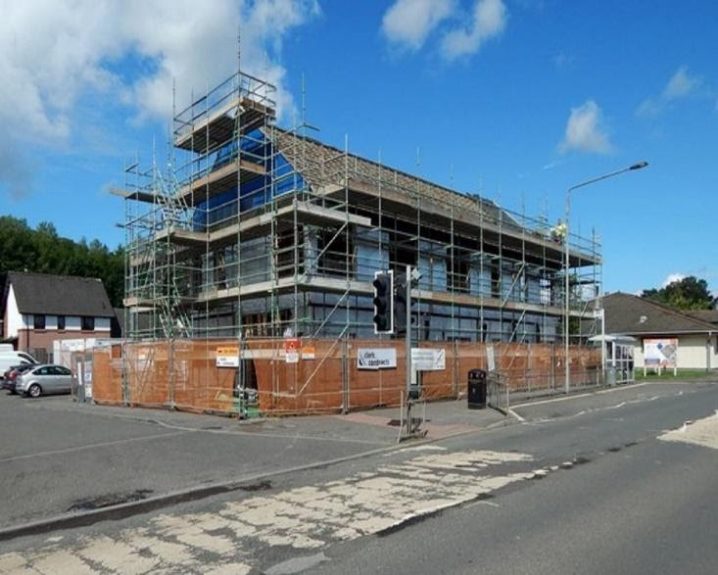Starting a construction project requires exceptional planning, precision, and a solid idea about the layout. You must always have a clear idea about how you are going to start it and how you are going to finish it. Everything in between these two steps depends on the plan and strategy that you have made to achieve your goal.
Each commercial construction project is different from the other depending on its type or size. Every project is unique in its design and thus follows a different construction strategy.

However, there are certain steps that are common among all construction projects. We’ve briefly explained these basic steps that you should know when you hire a Commercial Construction company.
- Planning
Construction planning of a commercial building consists of three main steps.
- Development of Plan
- Financial Analyses
III. Construction Team Selection
The development of building plan starts once the construction site is chosen. Architects and engineers develop the plan depending on the owner’s requirement, budget, and other specified details. However, sometimes an owner asked the team to design the building layout before site selection.
- Cost Estimation
After site selection and plan development, the process of construction cost assessment takes place. In this step, structural design, cost of material and equipment is estimated for the project. The cost estimation step includes the following factors:
- Material cost
- Equipment cost
III. Labour cost
- Construction cost
- Miscellaneous cost
Miscellaneous cost includes inflation rate, wages rate, certification fees, and other expenses that may increase the overall construction cost of the project. You also can’t forget about the price of delays as well. Weather is one of the biggest culprits of delays too, so you want to always have a backup plan in place. For example, if there’s a possibility of snow for your project, you want to be sure that you have a reliable commercial snow and ice removal company that will be able to assist you in getting your site ready for work.
You can use connected project analytics software to keep track of construction costs and see real-time information about what’s happening with the project. This type of software is easy to use and highly portable, making it possible to track, reduce, and analyze construction costs from anywhere at any point during the project.
- Permits and Insurance
Necessary permits are required to start the commercial construction project, which may vary from area to area. Usually, necessary excavation work is done for sanitation lines, water, power, and other utilities. With that, you’ll also more than likely need to hire professional asphalt paving services as well.
You may have to pay huge fines if you start construction without getting the necessary permits. Authorities may demolish your project if you do not have the necessary permits. Hence, getting the permits and insurance can save you from unnecessary delay and worries.
- Site Preparation
Actual commercial construction works start from the site preparation step. It includes excavations, filling, and levelling works depending on your building plan and site area. Usually, necessary excavation work is done for sanitation lines, water, power, and other utilities. You also have to set up temporary facilities for the workforce, followed by an inspection from the authorities.
- Foundation Construction
Commercial construction projects are heavy buildings that are constructed on concrete foundations. The foundation construction step is also dependant on the water table, soil type, and building size. Sometimes, soil testing is done to check the bearing capacity of the site. Pile foundation is required for high-rise buildings, whereas for low-rise buildings, shallow foundations are employed.
Soil is excavated for foundation construction once the foundation process is done. This is performed depending on the layout of the foundation.
- Superstructure Construction
After completion of substructure, the construction process of the superstructure begins. Typically, the construction of the superstructure starts with a framed structure in commercial buildings. The masonry walls are constructed later, once the framed structure is established. The construction takes place according to the building plan and proper space is left for exterior doors and windows.
Here’s a list of additional construction work that takes place during this step.
- Construction of siding or roofs
- Installation of air conditioning, ventilation, and heating
- Providing adequate water line and the electric connection line
- Providing insulation works to prevent lighting incidents
- Waterproofing to the walls
- Flooring works
- Plastering and finishing surfaces and walls
- Interior and exterior painting
In short, all the construction work is done during this step including the installation of different systems.
- Punch List
The contractor usually examines the whole building and inspects all the systems. He inspects the whole building and makes a punch list to ensure everything is done according to the building plan. He notes the areas or systems that are below quality level or not built properly for correction. The correction is then made in the required areas and the contractor inspects the building for a final look.
- Warranty Period
The contractor handover the building to the owner once it is complete. He is then required to specify a warranty period and if the owner finds any defects during this grace period, the contractor is responsible for it. The contractor must fix and solve the issues, defects, and other construction problems.
Bottom Line
Commercial construction projects are not like residential construction and require serious effort. The above-mentioned steps can take off stress from your shoulder and help you build a better construction strategy. We hope that these basic steps will help you complete your construction project within budget and deadline.



